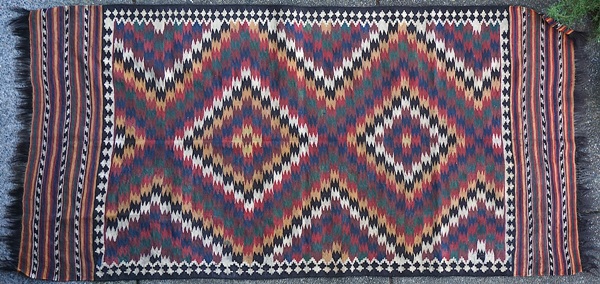Perhaps this thread should be Kilims Called Qashqai. There are a heck of a lot more of those than ones labeled Khamseh.
Here is one which is on the market as Qashqai. The colors, especially
the light blue, green and the light orange, seem different for a
Qashqai. The warps appear to be a mix of light, with sections of
darker, wool - often a Khamseh attribute:

It is in slit weave, which is a more Qashqai trait than their
neighboring Luri. If we were to generalize, (what a concept!) a Luri
weaving would be more likely shared-warp. If it isn't Qashqai, the
construction could more probably nudge it into the Khamseh range.
Here is another rug, also on the market, labeled SW Persian.

It has a Qashqai appearance, with the major gul and typical frieze.
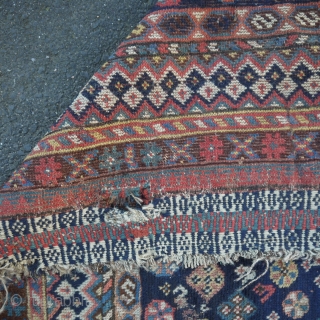
But the frieze is multi-colored, the reciprocal border is quite similar
to the kilim above, and the S cartouche border is quite Khamseh in
appearance.
These kinds of similarities, vague as they are, could allow us to
separate pieces into more discrete groups than simply Qashqai or the
fall-back Shiraz category.
And another "Qashqai" kilim on the market. This one has the shorter,
more square shape which some Basseri Khamseh kilims are said to have.
It doesn't have the Qasiqai frieze, but does have dark gray warps.

The reciprocal medachyl border, S-shaped rows and tuning-forks could give it less Qashqai cachet and more Khamseh confidence.
A few weeks of poring over bushels of kilim images hasn't produced a
smoking gun of evidence one way or another. The issue of whether or not
many Qashqai kilims are actually Khamseh may, in fact, be a study of
"If not Qashqai, what?".

Patrick Weiler













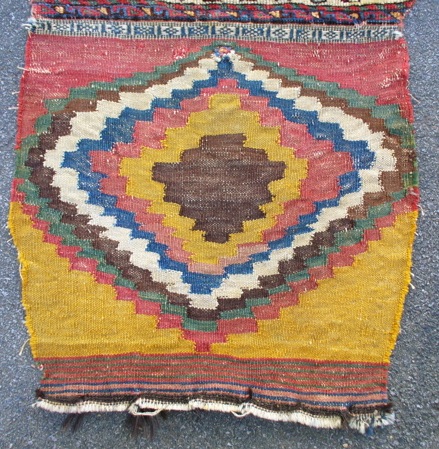




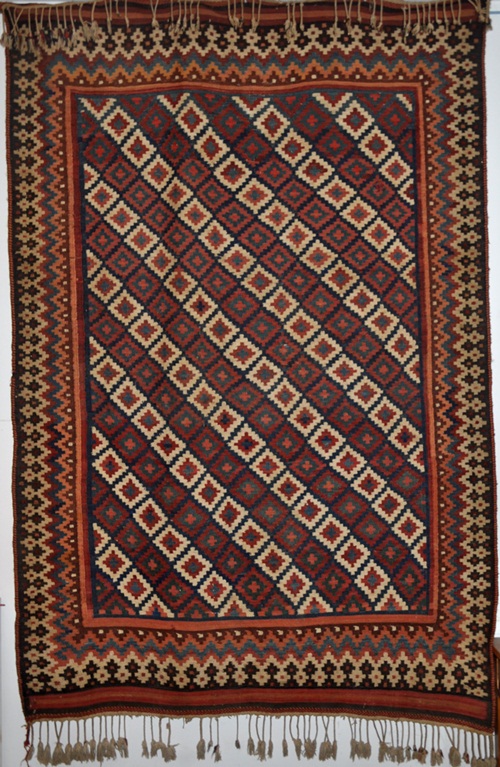







 .
.












 ) my supposition about your piece would
have been, like yours, the Nakhichevan/Zangezur area.
) my supposition about your piece would
have been, like yours, the Nakhichevan/Zangezur area. 



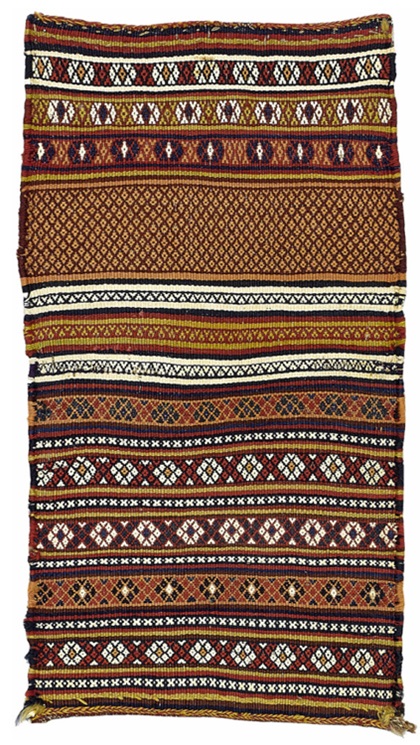


 ), I wondered
if, rather than Qashqai as I had assumed, it could perhaps be Khamseh.
), I wondered
if, rather than Qashqai as I had assumed, it could perhaps be Khamseh.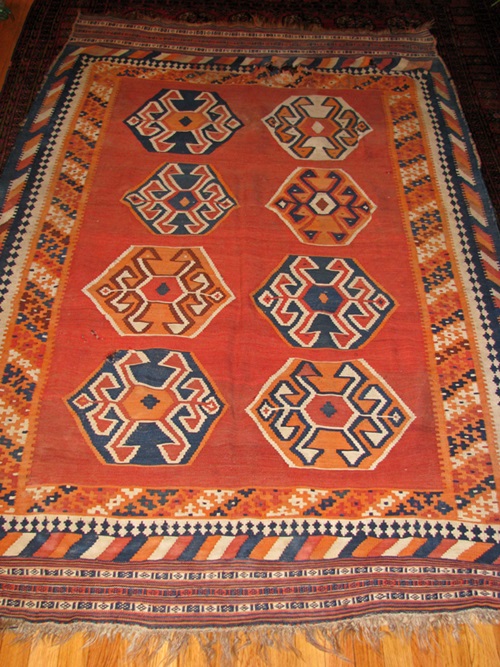






 in developing these Khamseh kilim
clues.) darker coloration of their kilims?
in developing these Khamseh kilim
clues.) darker coloration of their kilims?



















